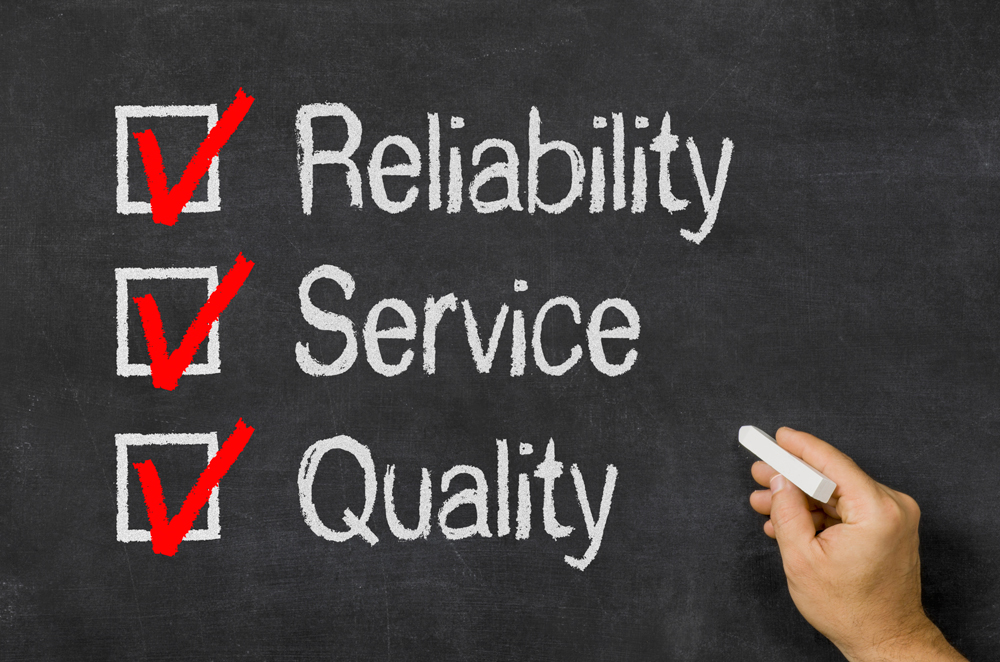Wasp Barcode Technologies: The Barcode Solution People
Inventory Management Best Practices And How to Implement Them

It may seem overwhelming to start inventory management best practices, especially if you’ve been in business for awhile. Perhaps years of manual inventory control has wreaked havoc on your warehouse, with products stored haphazardly and no systems in place to ensure a safe and efficient work environment.
To get your business on the right track, we’ve not only provided you with inventory best practices to start with, but also steps to get them up and running in no time.
1. Location Management
Location, location, location. Your warehouse is prime real estate, and no matter the size of your warehouse, you need to optimize the space you have. If your stock is unorganized and hard to access, it will cost your business a lot of man hours when workers spend extra time to find items that are misplaced or lost.
[su_divider top="no" size="2"]
[su_divider top="no" size="2"]
“With the proper amount of planning on your part, you can organize your warehouse to be an efficient and effective place of business,” Kristie Lorette of Demand Media wrote in an article in
Chron. “[This] ultimately means more money for your business.”
So whether you’re just starting from scratch or if your inventory processes need warehouse needs a makeover, here is a
short checklist to get started:
- Create a floor plan. It’s important to know the entire layout of your warehouse, so create or obtain a copy of the floor plan to completely know what you have to work with from the start.
- Create slips of paper for product categories. Take small slips of paper or sticky notes and write down each product category. Stick the pieces of paper to the floor plan, according to how you want the warehouse arranged.
- Decide what type of storage is best for your products. This obviously will be different according to your industry and the types of inventory you store. However Lorette adds, “Consider shelving or storage that is large enough to store each product and that is sturdy enough to hold the weight of the product.”
- Make signs for each product. Once you have a storage plan in place, label the shelves with proper signage by product name, product number, or category.
- Make sure that your inventory layout in the warehouse matches the labels you have on your floor plan. This ensures you can have a master plan for storage. You can also update your inventory tracking system to match the layout.
- Initiate a process for incoming and outgoing inventory. Write a policy and procedure manual, detailing how the inventory process works for your business. Describe how inventory arrives in receiving, including which employee is responsible for certain tasks -from logging inventory into your inventory management system, to who pulls the inventory from shelves and how the product ships to the customer.
- Assess the layout. Once the warehouse is functioning under the new system, perform an evaluation in every aspect of your inventory.
“If the shelves are not working or there is a problem in one part of the inventory process, determine what changes you can make to improve the inventory setup and processing,” Kristie Lorette advises.
2. Product Data
A lot/batch tracking system identifies all inventory with identification labels. When products are received or shipped, the IDs are read and records are automatically kept in an inventory management system. A
barcode inventory management system easily connects the dots between what items you receive in the warehouse to what goes out.
Imagine if you are one of the
46 percent of small businesses that collect inventory information on paper, and one of your products is recalled. It would be a nightmare to track down what customers bought the item. When you have a barcode inventory management system in place, all records are easily scanned, stored, and found again in case of an emergency.

3. Inventory Management System
According to the 2016
State of Small Business Report, 45 percent of business owners hoped to increase profits this year. However, with the plethora of new technologies that become available, seemingly on a daily basis, you might overlook the most obvious ways to increase profits: with inventory management. Once you implement a barcode inventory management system, you’ll likely reap these benefits that positively impact business productivity:
- No more paper records
- More work is done in less time
- Key performance indicators (KPIs) can be identified and tracked
- Cycle counts can be done easily and more often
- Distribution processes will run more efficiently
[Tweet "According to the 2016 State of Small Business Report, 45 percent of business owners hoped to increase profits this year."]
When the right tools are provided to your employees, they’ll be more productive. And that will lessen frustrations for them and you as more work is getting done and more profits will be had.
4. Cycle Counts
Cycle counting is a vital piece of your inventory management puzzle and
must become part of your daily or weekly routine.
“If you only cycle count sporadically, you'll only get sporadic results,” Ted Hurbut wrote in an
INC article. “The only way to get the full benefit of any cycle count program is to count.”
A good start would be to develop a schedule for conducting cycle counts. Hurbut recommends a 13-week cycle count calendar and counting at least once during that timeframe. Many inventory management software systems enable you to cycle count by category or subcategory, so it’s important to prepare what you plan to count each time.
Start pre-count preparation the night before. You’ll need to:
- Close out open inventory transactions.
- Restock all overstock, understock, or backstock.
- Account for received purchase orders and inbound transfers in your system, as well as physically put away all items.
- All completed customer orders need to be closed and invoiced.
5. Inventory Strategy
An inventory strategy can be defined as “a day-to-day methodology to follow for ordering, maintaining, and processing items in your warehouse.” The aforementioned best practices will definitely be part of your strategy. Consider these steps as you devise your initial plan:
- Know how your inventory will be properly stored. For example, be sure products are stored at the required temperature or are stored in a way that employees can pick, pack, and ship with little difficulty.
- Implement inventory management software to collect data easily as well establish and track inventory metrics important to your industry.
- Set a re-order point (i.e. order more widgets when only 50 are left in stock).
- Target high inventory turnovers; the higher the turnover, the more efficiently your business is operating.
- Put a process in place for getting rid of excess inventory (i.e. disposal, donation, liquidation sales, etc.).
It’s vital that you take steps to establish processes now so you don’t end up clueless to what comes and goes in your warehouse operations, like entertainment company
TopGolf. One warehouse controlled all gaming parts, such as ball dispensers, targets, balls, mats, and various technical pieces, for four TopGolf locations. The company used manual inventory management processes, and daily functions were out of control.
“We never had a true handle on inventory in the warehouse and keeping the sites running at full capacity was stressful. We didn’t know when orders were coming in, and we had difficulty tracking what we were sending out,” said Bryan Harej, inventory analyst for TopGolf.
Harej did some research, and
invested in an inventory management system. In turn, it improved workflow processes and helped establish better practices for the business as a whole.
How would implementing an effective and efficient routine with inventory best practices help your business to save time and increase profits?




